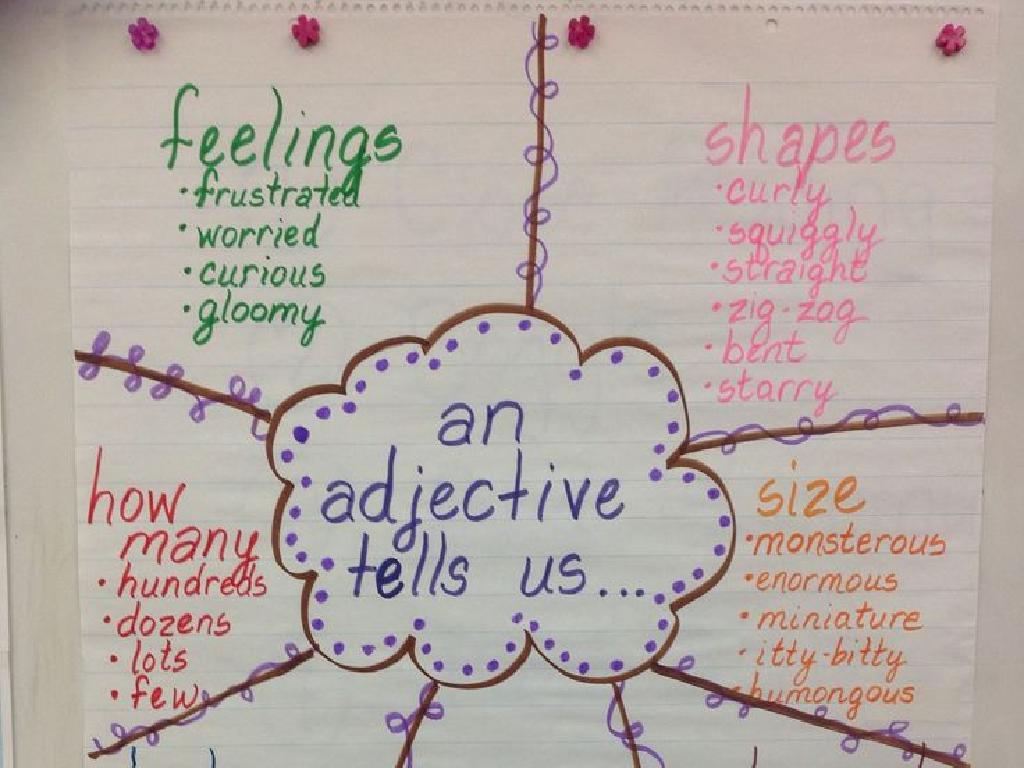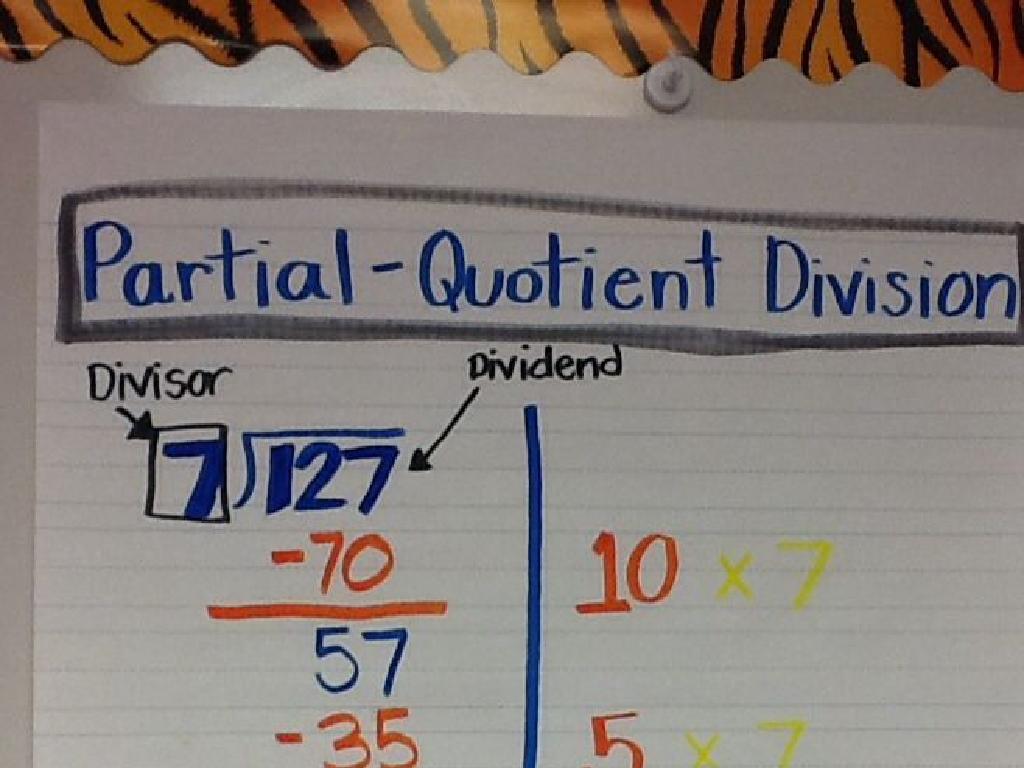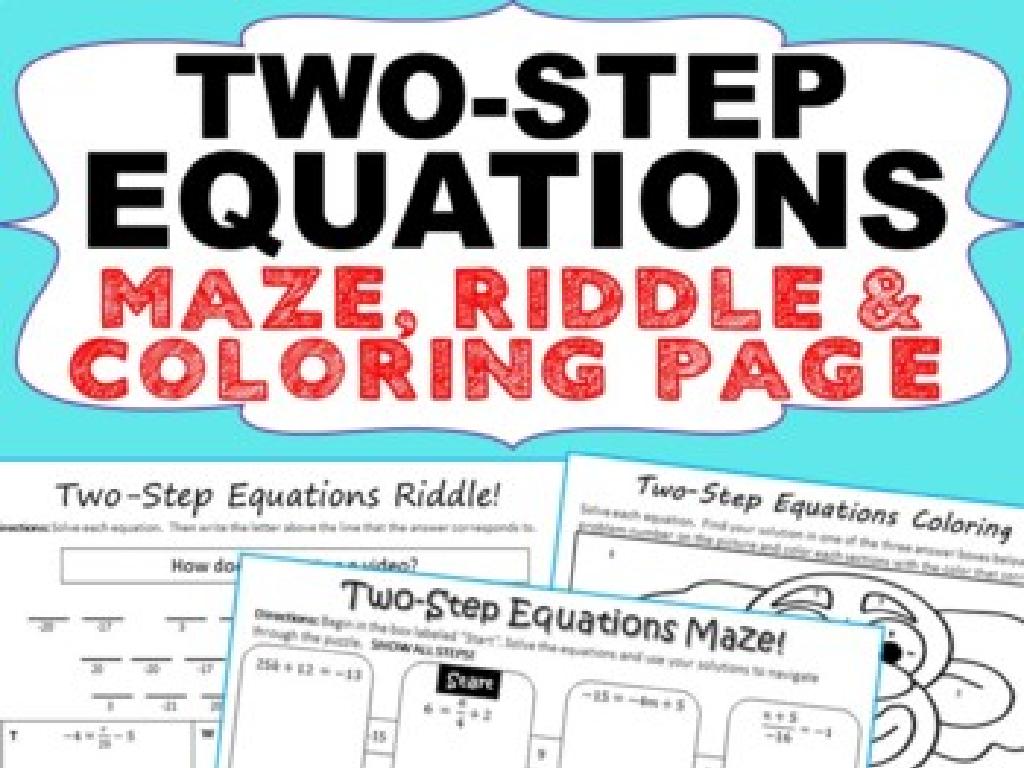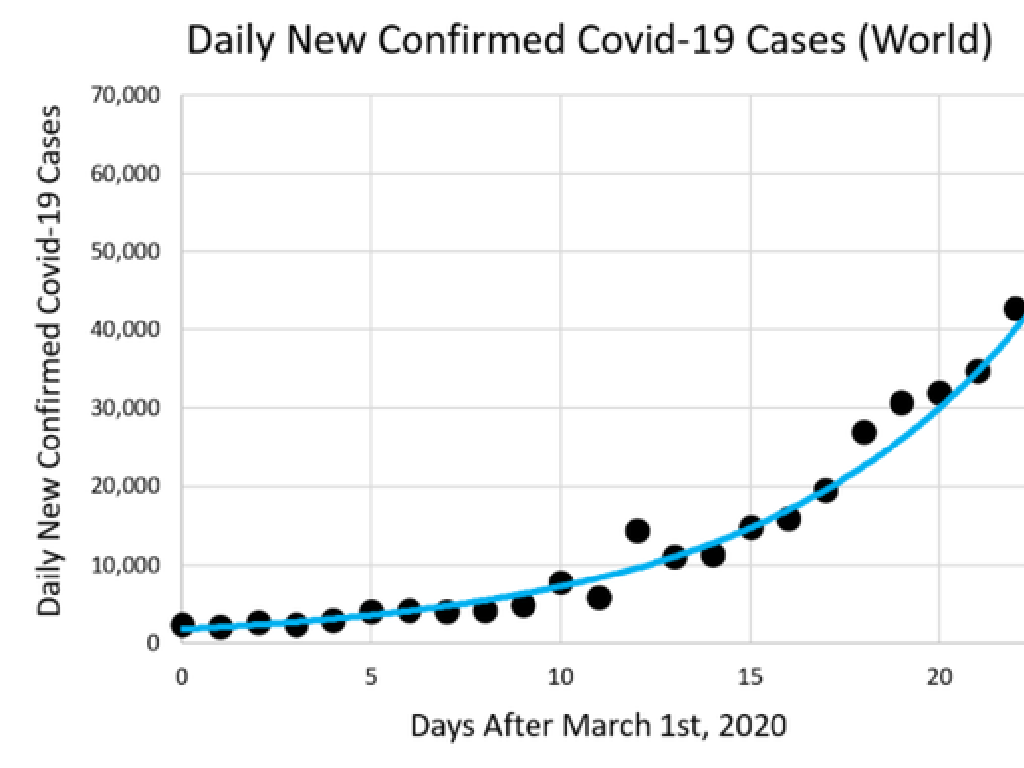Volume Of Cubes And Prisms
Subject: Math
Grade: Seventh grade
Topic: Surface Area And Volume
Please LOG IN to download the presentation. Access is available to registered users only.
View More Content
Introduction to Volume: Exploring 3D Shapes
– Understanding 3D shapes
– Objects with length, width, and height
– Defining volume
– Space occupied by an object, measured in cubic units
– Volume’s role in daily life
– Used in cooking, packing, filling pools, etc.
– Calculating volume of cubes/prisms
– Use formulas: Volume of cube (s^3), prism (Bh)
|
This slide introduces the concept of volume within the context of three-dimensional shapes, which are characterized by having length, width, and height. Volume is a measure of the space occupied by an object and is expressed in cubic units. Understanding volume is crucial in everyday life for activities such as cooking (measuring ingredients), packing (determining box sizes), and filling swimming pools (calculating water needed). Emphasize the practicality of knowing how to calculate volume and provide examples. Teach the formulas for the volume of cubes (side length cubed) and prisms (base area times height). Encourage students to think of examples where they encounter volume in their daily lives and to visualize how different shapes can have the same volume.
Volume of a Cube
– What is a cube?
– A cube is a 3D shape with 6 equal square faces
– Volume formula: V = side^3
– Example: Cube with side 5 cm
– If each side of the cube is 5 cm, volume is 5^3 = 125 cm^3
– Calculate volume for practice
– Find the volume of a cube with side lengths of 2 cm, 4 cm, and 6 cm
|
Introduce the concept of a cube by discussing its properties, such as having six equal square faces, edges of the same length, and right-angled corners. Explain the volume formula for a cube, V = side^3, emphasizing that ‘side’ refers to the length of an edge of the cube. Provide an example by calculating the volume of a cube with a given side length, such as 5 cm, to demonstrate how to apply the formula. Finally, encourage students to practice with different side lengths to solidify their understanding of the concept. The practice will help students become comfortable with the formula and its application in different scenarios.
Practice Problems: Volume of a Cube
– Calculate volume of a 5 cm side cube
– Volume = side³; so, 5 cm x 5 cm x 5 cm = 125 cm³
– Find side length of a 64 cm³ cube
– Cube root of 64 cm³ = 4 cm; Volume = side³
|
This slide presents two practice problems to help students understand the concept of volume in cubes. For the first problem, guide the students to use the formula for the volume of a cube (Volume = side length x side length x side length) to calculate the volume when the side length is given. For the second problem, instruct students on how to find the cube root of the volume to determine the side length of the cube. Encourage students to solve these problems on their own first, then review the solutions as a class. Provide additional practice problems if time allows, and ensure that students are comfortable with both calculating volume from side length and finding side length from volume.
Volume of Rectangular Prisms
– Define a Rectangular Prism
– A 3D object with 6 rectangular faces
– Volume formula: V = l x w x h
– Multiply the length (l), width (w), and height (h)
– Example: Volume calculation
– If l=5cm, w=3cm, h=2cm, then V=5x3x2=30cm³
– Practice with different dimensions
|
Introduce the concept of a rectangular prism by describing its properties, such as having six faces that are all rectangles. Explain that the volume of a rectangular prism can be found by multiplying its length, width, and height. Provide a clear example with specific dimensions to illustrate how to apply the formula. After the example, encourage students to practice calculating the volume of rectangular prisms with different dimensions to reinforce their understanding. This will prepare them for more complex volume problems and help them recognize the practical applications of volume in real-world scenarios.
Practice Problems: Volume of Rectangular Prisms
– Calculate volume: 2cm x 3cm x 4cm
Volume = length x width x height. What’s 2 x 3 x 4?
– Given volume: 120cm³, find length
Rearrange formula to find length: V / (w x h)
– Use formula: V = l x w x h
– Apply inverse operations
Divide volume by product of width and height
|
This slide presents two practice problems to help students apply their knowledge of finding the volume of rectangular prisms. For the first problem, students will use the formula for volume (V = length x width x height) to calculate the volume of a prism with given dimensions. The second problem requires students to work backwards by using the given volume to find the missing dimension (length), which involves rearranging the formula and applying inverse operations. Encourage students to show their work step by step and verify their answers. These problems will reinforce their understanding of volume calculation and how to manipulate the formula to solve for different variables.
Real-World Application: Volume of Prisms
– Identify everyday prisms
– Look around to find prismatic shapes like boxes, tanks, etc.
– Volume in packing & storage
– Knowing volume aids in efficient space utilization for items
– Classroom volume activity
– Measure and calculate volume of items like books, pencil cases
– Understanding practical use
|
This slide aims to connect the concept of volume with practical, real-world applications that are relevant to the students’ everyday experiences. Start by asking students to identify objects around them that resemble prisms, such as cereal boxes or aquariums. Discuss how understanding the volume of these objects is crucial in contexts like packing for a trip or organizing a space. The activity involves students measuring classroom objects that are prism-shaped and calculating their volume, reinforcing the mathematical concepts learned. This hands-on approach helps solidify their understanding and demonstrates the usefulness of math in daily life. Provide clear instructions for the activity, ensuring students understand how to measure length, width, and height, and then use these measurements to calculate volume. Offer several examples of objects to measure so that students can work on different items.
Class Activity: Create Your Prism
– Gather materials: paper, ruler, scissors, tape
– Construct a cube and rectangular prism
– Follow the instructions to accurately create the shapes
– Calculate the volume of each prism
– Use the formula V = l x w x h for volume calculation
– Record and compare your results
– Note down the volume of both prisms, discuss differences
|
This hands-on activity is designed to help students understand the concept of volume through a practical exercise. Students will use their creativity and understanding of geometric shapes to construct a cube and a rectangular prism. After construction, they will apply the formula for volume (V = length x width x height) to calculate the volume of their paper models. Encourage students to measure accurately and double-check their calculations. This activity not only reinforces the mathematical concept but also enhances their motor skills and ability to follow instructions. Possible variations of the activity could include using different materials, creating prisms of various sizes, or challenging students to calculate the surface area as well.
Review and Q&A: Volume Concepts
– Recap volume calculation
– Review how to calculate the volume of cubes and prisms
– Discuss volume formulas
– Formulas: Volume of a cube (s^3), prism (Bh)
– Address student questions
– Clarify doubts, provide additional examples if needed
– Preview surface area topic
– Briefly introduce the concept of surface area for the next lesson
|
This slide is aimed at reinforcing the students’ understanding of volume before moving on to surface area. Start by reviewing the methods to calculate the volume of cubes and prisms, ensuring that students can recall and use the formulas correctly. Volume of a cube is found by cubing the side length (s^3), while the volume of a prism is the product of the base area (B) and height (h). Open the floor to student questions, addressing any confusion and providing extra examples to solidify their grasp of the concept. Conclude by giving a brief introduction to surface area to pique their interest and prepare them for the next lesson. The notes should be detailed enough to guide the teacher through the review process and suggest possible questions to assess student understanding.






